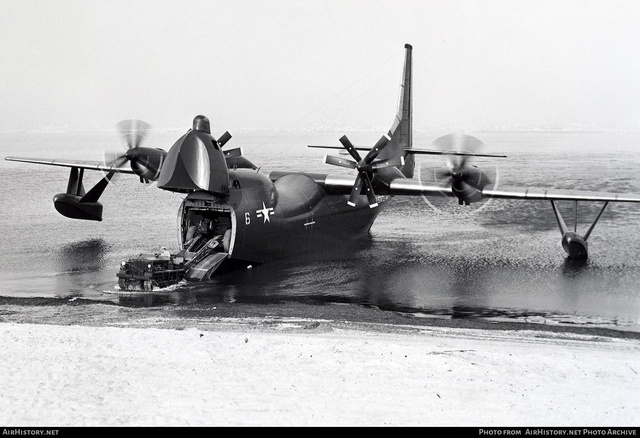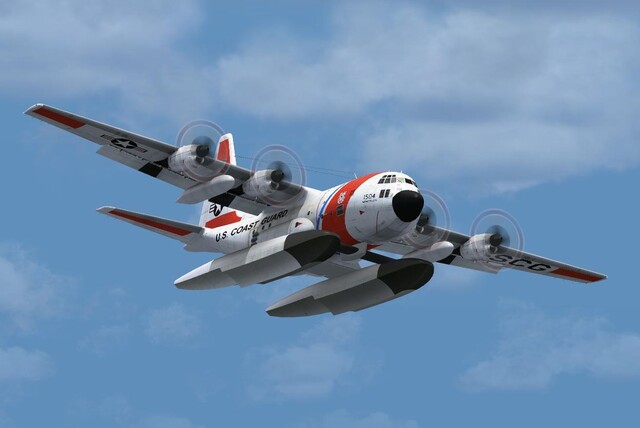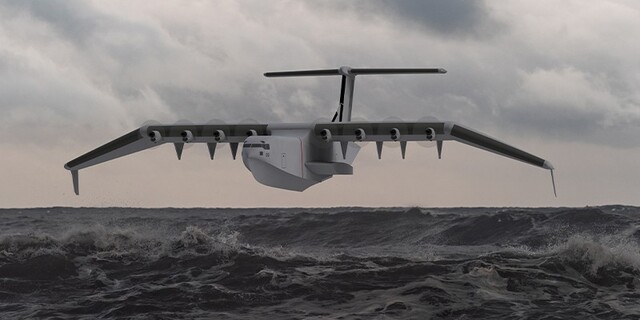 Will the US reintroduce flyingboats?
Will the US reintroduce flyingboats?
Without any doubt the relation between the United States of America and the People’s Republic of China has seen better times. Since the Presidency of Donald Trump the US have turned away from China and the relation has not improved since Joe Biden took over the White House.
China has in recent times more frequently expressed its claim on Taiwan, which it considers to be a renegade province. The resulting increase in tension has caused the US Special Operations Command (SOCOM) to think about adapting parts of its inventory to a potential conflict in a new area, the Western Pacific. The region is characterized by vast areas of water and the (almost) absence of infrastructure capable of accommodating fixed wing aircraft.
Exploring the possibilities to tackle this problem made SOCOM go back in time when the use of seagoing floatplanes or flyingboats was still normal. But that is not a decision which can be easily taken: the last of the large flyingboats, the Convair R3Y Tradewind (as illustrated above) was retired as long ago as 1958!
Initially the Command considered the use of one of its ‘Golden Oldies: the Hercules. In 2021 SOCOM announced its interest in a modified float equipped version of the Special Operations Lockheed MC-130J. However little progress seems to have been made in developing this seagoing Herky as it is a technically challenging project.
 Meanwhile SOCOM seems to be gathering information on the use of modern sea going airplanes. According to FlightGlobal, SOCOM’s head of acquisitions present at the Special Operations Forces (SOF) Week conference in Tampa (FL) on 9 May 2023 revealed the command’s interest in Japan’s experience with its ShinMaywa US-2 maritime cargo aircraft. These amphibians are operated by 71 Kokutai of the Japanese Maritime Self Defense Force based at Iwakuni.
Meanwhile SOCOM seems to be gathering information on the use of modern sea going airplanes. According to FlightGlobal, SOCOM’s head of acquisitions present at the Special Operations Forces (SOF) Week conference in Tampa (FL) on 9 May 2023 revealed the command’s interest in Japan’s experience with its ShinMaywa US-2 maritime cargo aircraft. These amphibians are operated by 71 Kokutai of the Japanese Maritime Self Defense Force based at Iwakuni.
While the development of a float equipped version of the Lockheed MC-130J hardly sees any progress, this sudden interest in the US-2 opens up the possible procurement of this amphibian type by SOCOM. In its logistic support to the Special Operations Forces, SOCOM is independent in its choice of inventory.
At the same time the US Defense Advanced Research Projects Agency (DARPA) is looking at other alternatives. Recently Aurora Flight Sciences, a Boeing Company, has been selected for phase 1 of the ‘Liberty Lifter’ program, which aims to design, build, float, and fly an affordable X-plane that demonstrates revolutionary heavy-air-lift capability from the sea.
This initial award funds six months of work to reach conceptual design review of a wing-in-ground-effect seaplane and includes an executable option to continue work through preliminary design review. Aurora’s point of departure concept is a high-wing monohull seaplane designed for affordable full-scale production and extended maritime operations, including at high sea states and in high-traffic areas.
 Aurora’s point of departure design aims to meet the specifications set by DARPA, including a ferry range greater than 6,500 Nm, flying in ground effect in sea states up to 5 (up to 13 ft wave height), and a cargo capacity for two USMC Amphibious Combat Vehicles (ACV) or six twenty-foot container units. It would make use of wing-in-ground-effect lift to carry heavy loads and be capable of flying as high as 10,000ft.
Aurora’s point of departure design aims to meet the specifications set by DARPA, including a ferry range greater than 6,500 Nm, flying in ground effect in sea states up to 5 (up to 13 ft wave height), and a cargo capacity for two USMC Amphibious Combat Vehicles (ACV) or six twenty-foot container units. It would make use of wing-in-ground-effect lift to carry heavy loads and be capable of flying as high as 10,000ft.
The Aurora and Gibbs & Cox design team will work from Aurora’s headquarters in Manassas (VA). The second phase of the Liberty Lifter project – which includes detailed design, manufacturing and demonstration of a full-scale X-Plane – is to begin in mid-2024, according to DARPA.
Illustration by Aurora Flight Sciences (Liberty Lifter) and www.abload.de (C-130)
Photo by Nederlands Instituut voor Militaire Historie through AirHistory.net Photoarchive

